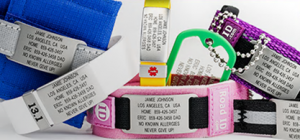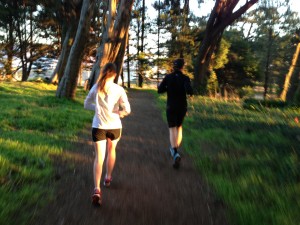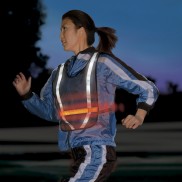Top 10 Safety Tips Every Runner Should Follow
Running is a great sport and fitness activity that many of us enjoy. But whether you are a seasoned runner or new to running, it is easy to focus on your time, your form, getting ready for your next race, just enjoying the outdoors, or rocking out to some great music, and overlook many issues associated with ones safety while out running. It is a topic many of us do not like to think about, and a shame some aspects of it even needs to be discussed, but it is very important and one that should not be ignored. In this post we look to address several topics associated with remaining safe while running. After all, if you are not safe while running, it doesn’t matter how fast you run or how far you run. While you can’t always eliminate every safety concern, you can be smart and make choices that help improve the likelihood of a fun, safe run. So for your own protection and safety while running, please read and give these some thoughts.
1. Location: Where you run is very critical to ones safety. The first rule is to know your surroundings and that your surroundings are safe. By surroundings I am referring to the neighborhood/environment. I suggest staying with locations that you are familiar with and known as runner friendly/safe. If you are traveling or don’t know, ask other runners, ask at a running store in the area, ask online running groups or clubs. Is it isolated or traveled by other runners/walkers/bikers? Does it have good lighting, well maintained surfaces (not uneven sidewalks), is it generally a “safe” neighborhood? When in doubt, avoid one route for another that you know is typically safer. And when you are really in doubt, use a treadmill at a health club, in your hotel, etc. Also, wherever you run you should know enough about the area to have a “safety plan” in the event you feel threatened. If you feel threatened at all, change your route immediately and head somewhere safe. Trust your instincts (don’t suppress feelings when it comes to your safety) and head for safety immediately. Know where there is a police or fire station, areas that typically have lots of other people, stores, restaurants or a neighbor’s house you can run to. Better to over react and change your running route then to assume or think it will probably be OK. Also, it is always good to vary your running route. While it is easy to get into a routine, and run the same time and route for all your runs, if at all possible it is good to be unpredictable. You really don’t want to give someone the ability to predict exactly when and where you will be running.
2. Course:
I have a simple rule regarding the course – avoid roads if at all possible. Some will disagree because roads are convenient, they live in the city, or their upcoming race will be run on roads and they want to train on the surface. But roads have cars and trucks and those drivers are not always looking for a runner. Drivers can be unpredictable and known to do stupid things, so the first rule is to use a path or track that avoids traffic. If you live in a city, find a park or school track that you are permitted to use. Walk to it to loosen up, or drive, take a bus or subway if you have to. If you must use the road, find roads with low traffic volume, wide shoulders, and minimal intersections. And run against traffic so you can watch and know what the drivers are doing – always assume that they do not see you, or will do something stupid. By running toward traffic you see what they are doing and can jump out of the way if you have to. And obey traffic laws – don’t cross the street in the middle of a block, or “run” through a red light because you think you have time before the next car comes. Look both ways before crossing, even if you have a green light, stop sign or right-of-way crosswalk – again, assume drivers don’t see you, will not stop, and/or will do something stupid. If you are running on a sidewalk adjacent to a road, avoid running close to the road – if you trip and fall you don’t want to end up in the road (have seen that happen), and you are further from the fumes and debris that automobiles can shoot up at you.
3. Notification: Always, and I mean always, tell someone when you are going for a run. Tell them when you are leaving, your planned route, and when you expect to return. If you live alone, contact the person(s) you told you were going for a run when you return to let them know you have safely returned. If you do not return within a reasonable timeframe to your expected return, instruct them to look for you or notify authorities. This may sound a little extreme, but it is very important. Another tool for tracking you as a runner is to use a GPS device/app that can be shared with others. MapMyRun, RunKeeper, RoadID and others have capabilities for someone to track your location, and the RoadID app will even send a notification text/e-mail if you are stationary for a certain period of time. Still, inform others of your run plans, when you are leaving, route you are running, expected return time, and when you return. And use the GPS tracker/apps so others can find exactly where you are if necessary.
4. Identification:
I recommend running with some form of ID, so in the event of an emergency responders know who you are, if you have any medical conditions, and who to contact in the event of an emergency. My recommendation is something like a RoadID bracelet that contains all this information and I further recommend the kind that has your key emergency information clearly printed on it – not requiring connecting to a database to get this information. While I think the electronic systems are great for more detailed information, when in an emergency anything you can do to eliminate possible connection problems/lack of service in a remote area, damage to a device because of a fall or accident, or the added time it can take to access the information, is highly recommended. Wear it in a visible spot on your body so emergency personnel can find it easily. Also, change your screen saver on your cell phone to display emergency contact information so it is immediately available (another feature that is available on the RoadID app.)
5. Cell Phone: I always run with a cell phone. I use the GPS tracker on it to keep track of my run (mileage, pace, etc.), but it also is one of your most important safety devices. As mentioned earlier, with the right app others can track your exact location while you run. In addition, you never know when you will need to call for help for yourself or someone else. If you are feeling sick, twist an ankle, or just feel threatened or unsafe, call a friend or 911 in an emergency. Let them know exactly where you are located, your condition, and what to do (come get you, send police/ambulance, etc.) And always be sure your cell phone is fully charged before leaving – you don’t want to be halfway through a run when it dies on you.
6. Group Runs:
Whenever possible run in groups. Have a friend meet you for a run, join a local running group and participate in group fun runs and training runs, or just go to a setting where you know there will likely be several other runners on that track or path. Can’t find a group in your area, than start one. The saying, “safety in numbers” definitely applies to running. Besides, it can be more fun and motivating running with others. And if you have no one to run with, think about taking a dog for a run – it can be your dog or a neighbor’s. It can be good exercise for the dog, and help you feel and be safer.
7. Time: The time of day you run has a lot to do with safety. If you run before sunrise or after sunset, you are obviously running in the dark which presents a number of safety issues. If you run right at sunrise or sunset, the glare from the rising/setting sun can make it difficult for drivers to see you if you are running on the road. So the ideal time from a visibility safety standpoint is during daylight hours, when the sun is not close to the horizon. With work & school schedules, childcare issues, or other plans/issues, this is not always possible. But when possible, daylight is best. In the summer I find starting 30 minutes to an hour after sunrise ideal, before it is too hot. In fall, winter or spring, when temperatures are more moderate, anytime an hour after sunrise and an hour before sunset tend to be good for safety. If you must run in the dark, please review the section on clothing.
8. Weather: As runners we often like to brag about our extreme accomplishments: I ran through 5 feet of snow when it was 20 below, or I ran an Ultra through the dessert in 105 degrees, etc. But we really need to be smart about the weather and the conditions we subject ourselves to. Absolute rule of safety, if thunderstorms are in the area, or predicted to be in the area during your run, do not run outside. Change your scheduled run time or run on a treadmill (if this is the only time you can run.) Lightning strikes are serious risks to runners and should not be taken lightly. If you find yourself out and an unexpected thunderstorm arises, seek a safe shelter or car as quickly as possible once you realize the storm is approaching. Other important rules of running are to avoid extreme heat/humidity running to avoid heat stroke, and I also recommend avoiding extreme cold/windy conditions when possible. For times of extreme heat/humidity, run earlier in the day, on shaded paths, and close to water as long as it is within safe temperature/humidity zones. They tend to be cooler times/areas. For extreme cold/windy conditions, dress for warmth in layers. If you are concerned it is too hot or too cold, don’t take the chance but instead run on a treadmill. Or consider biking or swimming when too hot – they are cooler activities but still keep your aerobic conditioning high.
9. Clothing:
I am a big advocate for wearing the right clothes on a run. The wrong clothes can cause you to be too hot, too cold, chafe, etc. So take into consideration the weather before selecting your clothes – and dress in clothes that are ideal for temperatures 10-20 degrees hotter than the outside temperature (you will heat up on a run.) If it is extremely windy, be sure to have the right wind protection gear – the wind can make a big difference in how you feel. But most importantly, I recommend wearing clothing that is bright and easily visible to motorists, bikers, and others. You do not want to give anyone a reason to not see you. Reflective stripes on your clothes, hat, gloves & shoes are ideal, as are reflective removable bands you wrap around your arms or legs. A reflective hat, shoes or even a reflective runners vest (for over your clothes – especially at night) can be just the items needed to help you stand out. And if you are running at night, you should definitely have battery operated lights – to both shine out at others (many have a flashing mode that I like to use) and headlamps to light your path so you can see where you are running and not accidently find a hole, root, or something else that will make you fall or twist an ankle. GlimmerGear is a great source for these items.
10. Headphones:
I know this is an often debated topic, but from a safety standpoint it is pretty clear – you should run without headphones in your ears. This allows you to better hear what is going on around you and avoid traffic, bikers coming up behind you, instructions from race volunteers, or other concerns that you can be alerted to by hearing. Using your sense of hearing can be beneficial to alerting you to dangers before you see them. I know a lot of people prefer to listen to music or a podcast as they run (especially long, solo runs), and if you are one (as I am), follow these few guidelines: 1) keep the volume low (loud enough so you can hear the music, but also external sounds.) 2) don’t be so absorbed in your music that you do not pay attention to your surroundings. 3) never use noise canceling earphones. 4) wear one earbud in and leave one ear naked (without an earbud.)
Your personal safety while running is extremely important and our desire is for all runners to be safe and healthy while running. Don’t neglect to take the necessary precautions to avoid risks and maximize your probability of a fun, productive and safe run.
Let us know what you think about these safety tips. What additional tips and suggestions do you have? Have you ever felt unsafe or in danger during a run? What did you do? We would like to hear from you.
Be looking for Post 2 on Safety: Five Rarely Discussed Safety Tips for Runners.





